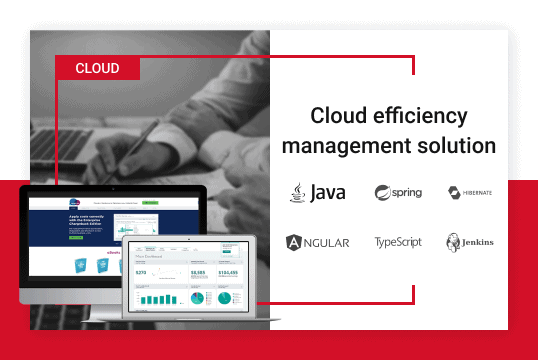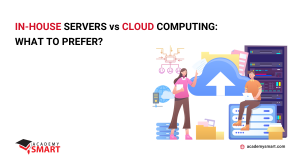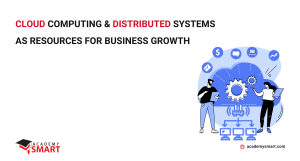Average Cloud Computing Costs for Small Businesses
Cloud computing opens up new horizons for small businesses. It provides access to state-of-the-art technology previously reserved for large enterprises without essential upfront capital investment. It offers the freedom to work from anywhere, facilitates effortless collaboration, and ensures data is safe and accessible. However, amid all the benefits of cloud computing, a pair of critical questions may bother: is it cost-effective for small businesses? Is cloud computing cheaper than on-premise servers? Let’s look at today’s cloud computing costs closer.
What are Demand Cloud Services for Small Business
First, let’s find out why cloud adoption can be attractive for small companies. There are a variety of cloud-based solutions and resources that can be accessed, scaled, and managed according to the specific needs and demands of business. The main options typically include:
- Infrastructure-as-a-Service (IaaS)
IaaS provides remote access to abstract computing infrastructure, including virtualized servers, data storage, and network connectivity. Small businesses can scale up or down without investing in physical hardware. - Platform-as-a-Service (PaaS)
PaaS presents a unified environment for application creation, operation, and management, abstracting away the complexities of the underlying infrastructure. It includes tools, libraries, and services for application development, making it easier for small enterprises to create and deploy software. - Software-as-a-Service (SaaS)
SaaS empowers users to access and utilize software apps through the internet on a recurring payment basis. Companies can access various applications, such as email, collaboration tools, and customer relationship management (CRM) software, without local installations. - Function-as-a-Service (FaaS)
FaaS, or serverless computing, allows clients to develop and run applications without the overhead of managing servers, making it cost-effective and freeing up resources for core business activities.
Utilizing cloud computing services, small businesses can resolve many particular tasks, simplifying processes and speeding up time to market, for instance:
- Data storage and backup
Cloud-based storage and backup enable customers to store and protect their data securely. These services often include automatic backups, data redundancy, and easy retrieval. Business cloud services also possess security options, such as firewall protection, intrusion detection, and encryption, to safeguard data and operations. - Scaling and load balancing
Cloud services enable small businesses to scale their resources up or down based on demand, ensuring optimal performance and cost-effectiveness. - Web hosting
Demand cloud services offer web hosting solutions for businesses, ensuring their websites are accessible and scalable to accommodate fluctuations in traffic. Cloud-driven database services provide reliable, and secure data management and retrieval. Content delivery networks improve website performance by distributing content across servers. - Collaboration and communication tools
Cloud-based communication tools, like video conferencing, email, and document sharing, enhance teamwork and connectivity for remote and on-site teams. - Analytics and reporting tools
Cloud platforms offer analytics and reporting tools that allow companies to gain insights from the data and make informed decisions. Cloud-driven AI and machine learning app deployment services can be leveraged to analyze data and improve processes and customer experiences.
As you understand, a different set of services and the amount of computing power consumed determines the cost of cloud computing in any particular case.

The most popular cloud computing services for business
How Much Does Cloud Computing Cost
The cost of cloud computing can vary widely based on several factors, including the cloud service model, the specific services and resources used, the duration of usage, and the cloud provider chosen. Clients can expect to pay for cloud services on a pay-as-you-go or subscription basis, allowing them to scale resources according to their needs. To determine the exact cost, it’s essential to consider the specific requirements of your business and review the pricing structures provided by cloud service providers.
To provide a general overview of actual costs for small businesses, here are some sample pricing from popular cloud service providers:
Amazon Web Services (AWS):
- AWS EC2 (compute): $0.009 per vCPU hour;
- AWS S3 (storage): $0.023 per GB per month;
- AWS RDS (database): $0.011 per DB instance hour.
Microsoft Azure:
- Azure Virtual Machines (compute): $0.009 per vCPU hour;
- Azure Blob Storage (storage): $0.026 per GB per month;
- Azure SQL Database (database): $0.024 per DTU hour.
Google Cloud Platform (GCP):
- GCP Compute Engine (compute): $0.006 per vCPU hour;
- GCP Cloud Storage (storage): $0.024 per GB per month;
- GCP Cloud SQL (database): $0.011 per vCPU hour.
Regarding trends, the cost of cloud servers for small businesses is anticipated to continue decreasing in the coming years. It results from intensified competition among cloud providers and the development of more efficient cloud technologies. Moreover, the shift towards cloud computing is expected to accelerate, leading more enterprises to migrate to the cloud. As demand for cloud computing services grows, it will likely contribute to further price reductions, making cloud solutions increasingly cost-effective for businesses of all sizes.
How to calculate cloud computing costs
Practical estimating cloud-related expenses involves understanding your usage patterns and the pricing models of your cloud service provider. Here are some helpful tips on how to calculate cloud computing expenses:
- Define your workloads
Thoroughly apprehend the resource necessities of your workloads. This knowledge forms the basis for accurate cost assession and optimization. - Use cloud cost calculators
Leverage cloud provider calculators to get initial cost estimates based on your specific needs, ensuring you have an apparent acquaintance of potential expenses. - Evaluate pricing models
Choose the most suitable pricing model for your usage patterns, whether pay-as-you-go, reserved instances, or spot instances, to align costs with your provisions. - Monitor resource utilization
Implement monitoring tools to track resource exploitation and right-size your services, avoiding excess capacity and reducing costs. - Budget and forecast
Create a budget and continuously monitor it. Regularly forecast outlay based on usage trends and business growth.
How to reduce cloud costs
The first step to reducing cloud costs is to choose the right cloud provider. There are many different cloud service suppliers available, each with its pricing and services. It is essential to compare them to find the one that is the best fit for your business needs. Academy Smart prefers to work with Amazon AWS to develop well-equipped cloud-based applications. Here is the guide on how to optimize AWS services costs.
Then, it is important to right-size your resources. It means using a suitable amount of resources for your needs. You can estimate their scope by monitoring your usage and identifying areas where you can scale up or down. Use the cloud provider’s or third-party monitoring tools to track your usage of computing, storage, and network resources. It is crucial to delete unused resources to avoid wasting money.
Many cloud providers offer free tiers that allow you to use a limited amount of resources for free. Free tiers are a great way to try out a cloud provider before you commit to using it.
Reserved and spot instances are another way to save money on cloud computing costs. Reserved instances are a type of cloud instance that you can purchase at a discount in exchange for committing to use them for a certain period. Spot instances are unused cloud instances that are available at a discounted price too. They are a good option for workloads that can be interrupted.
At last, many cloud-native tools and services can help you optimize your cloud expenses. They can aid you in monitoring your usage, identify areas where you can save money, and automate your cost-optimization efforts. The cloud performance management application our team delivered is an excellent example of such an application.

Cloud management solution we delivered
Why Migrate into the Cloud with Academy Smart
Are you ready to take your small business to the next level of digital innovation and efficiency? Academy Smart offers robust expertise in cloud-native software development, AWS services, and IT staff augmentation. Our team is made up of talented and passionate IT specialists: programmers, DevOps, business analysts, and project managers, with more than 13 years of practical experience in creating custom applications for enterprises. Contact us today, and let’s discuss how to transfer into the cloud profitably.
Frequently Asked Questions: Cloud Technology Costs for Small Business
Is cloud computing expensive?
The cost of cloud computing can vary depending on your specific needs and usage patterns, but it is generally less expensive than traditional on-premises IT infrastructure.
How much does cloud computing cost per month?
The average cost of cloud computing per month for small businesses is between $100 and $300. However, the actual cost can vary depending on the specific services you use, the resources you need, and your chosen pricing model.


